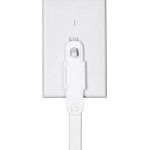How To Stop a Dog From Urinating On Furniture
Inappropriate urination on furniture is a frustrating and often perplexing problem for dog owners. This behavior can stem from a variety of underlying causes, making accurate diagnosis and targeted intervention crucial. This article provides a comprehensive overview of potential reasons behind this behavior and offers practical strategies for addressing it effectively.
Understanding Potential Medical Causes
A thorough veterinary examination is the first and arguably most important step in addressing inappropriate urination. Certain medical conditions can directly impact a dog's ability to control their bladder or increase their urge to urinate. Urinary tract infections (UTIs) are a common culprit, causing inflammation and discomfort that lead to frequent and urgent urination. Bladder stones or crystals can also irritate the bladder lining, resulting in similar symptoms. Diabetes mellitus and Cushing's disease can cause increased thirst and urination, exceeding the dog's normal bladder capacity and leading to accidents. Kidney disease can impair the kidneys' ability to concentrate urine, leading to increased urine volume. Furthermore, age-related cognitive dysfunction, sometimes referred to as canine cognitive dysfunction (CCD), can affect a dog's awareness of their surroundings and their ability to remember house-training rules.
The veterinary examination should include a urinalysis to check for infections, blood tests to assess kidney function and rule out metabolic disorders, and potentially imaging studies such as X-rays or ultrasound to evaluate the bladder and kidneys. Ruling out medical conditions is essential as it ensures that the behavioral interventions address the underlying problem and prevent the inappropriate urination from continuing.
Addressing Behavioral Causes Through Training and Management
Once medical causes have been ruled out, attention should shift to possible behavioral factors contributing to the problem. These can include incomplete house-training, anxiety, marking behavior, and attention-seeking behavior. Incomplete house-training is more common in puppies or newly adopted dogs, particularly those who have not had consistent exposure to a regular potty break schedule.
Anxiety can manifest in various ways, including inappropriate urination. Separation anxiety, triggered by being left alone, is a common cause. Other triggers can include loud noises, thunderstorms, or changes in the household routine. Marking behavior, typically seen in intact male dogs, involves spraying small amounts of urine to deposit scent and establish territory. While less common, some dogs may urinate on furniture as a way to get attention from their owners.
Addressing behavioral causes requires a multi-pronged approach that combines training, environmental management, and potentially behavior modification techniques. Re-establishing a consistent house-training routine is paramount. This involves taking the dog outside to a designated potty spot at regular intervals, such as first thing in the morning, after meals, after naps, and before bedtime. Praising and rewarding the dog immediately after they eliminate in the correct spot reinforces the desired behavior. When the dog is indoors, close supervision is crucial. If the dog shows signs of needing to urinate, such as circling, sniffing, or squatting, they should be immediately taken outside.
Crate training can be a valuable tool in preventing inappropriate urination. Dogs are generally reluctant to urinate in their sleeping area, so a crate can provide a safe and contained space when the owner is unable to supervise. The crate should be appropriately sized, allowing the dog to stand up, turn around, and lie down comfortably. Overuse of the crate or using it as punishment can lead to anxiety and worsen the problem.
For dogs with anxiety, identifying and addressing the triggers is crucial. Providing a safe and comfortable space, such as a den or a quiet room, can help reduce anxiety levels. Desensitization and counter-conditioning techniques, often guided by a certified professional dog trainer or veterinary behaviorist, can help the dog learn to associate the anxiety-provoking stimulus with positive experiences. In some cases, anti-anxiety medication may be necessary to manage the dog's anxiety levels.
If marking behavior is suspected, neutering the dog can often reduce or eliminate the behavior. Clean the marked areas thoroughly with an enzymatic cleaner specifically designed to remove pet odors. These cleaners break down the urine molecules, preventing the dog from being attracted back to the same spot. Restricting access to previously marked areas and increasing outdoor exercise and enrichment can also help reduce marking behavior.
Avoid punishing the dog for urinating on furniture. Punishment can create fear and anxiety, making the problem worse. Instead, focus on positive reinforcement and reward the dog for eliminating in the correct spot.
Environmental Management and Cleaning Protocols
Proper cleaning of affected areas is essential to prevent recurrence of the problem. Dogs have a highly sensitive sense of smell, and even trace amounts of urine odor can attract them back to the same spot. As mentioned previously, enzymatic cleaners are the most effective at removing pet odors. These cleaners contain enzymes that break down the urine molecules, eliminating the odor at its source. Avoid using ammonia-based cleaners, as ammonia is a component of urine and may actually attract the dog back to the area.
Apply the enzymatic cleaner liberally to the affected area, following the manufacturer's instructions. Allow the cleaner to soak into the fabric or carpet for the recommended time, and then blot it up with a clean cloth. Repeat the process if necessary. In some cases, it may be necessary to remove and replace heavily soiled items, such as cushions or carpets.
Restrict access to furniture that the dog has been urinating on. This can be achieved by covering the furniture with plastic sheeting, using furniture protectors, or moving the furniture to a room that the dog does not have access to. Providing alternative resting places for the dog, such as a comfortable bed or mat, can also help redirect them away from the furniture.
Increase the frequency of potty breaks, especially if the dog is prone to accidents. Make sure the dog has ample opportunity to eliminate outside, even if they don't show obvious signs of needing to go. Observe the dog's urination habits and identify any patterns or triggers that may be contributing to the problem.
Consider using dog diapers or belly bands as a temporary measure to prevent urine from reaching the furniture. These can be particularly helpful for dogs who are marking or who have difficulty controlling their bladder. However, diapers and belly bands should not be used as a long-term solution, as they can irritate the skin and prevent the dog from learning to control their bladder.

Stop Your Dog Peeing On Furniture With These Tips Mad Paws Blog

How To Stop Your Dog From Peeing On Bed 10 Tips

How To Stop Your Dog From Peeing On Bed 10 Tips

What Can I Spray To Keep My Dog From Peeing In The House Doctors

How To Stop A Dog From Marking In The House For Good

House Soiling Or Urine Marking How To Tell The Difference Hshv

How To Stop Your Dog From Marking Peeing On Carpet Youtube

How To Stop Your Dog From Peeing On Bed 10 Tips

How To Protect Furniture From Dog Urine Aroma Care Solutions

How To Stop Your Dog From Peeing Indoors








